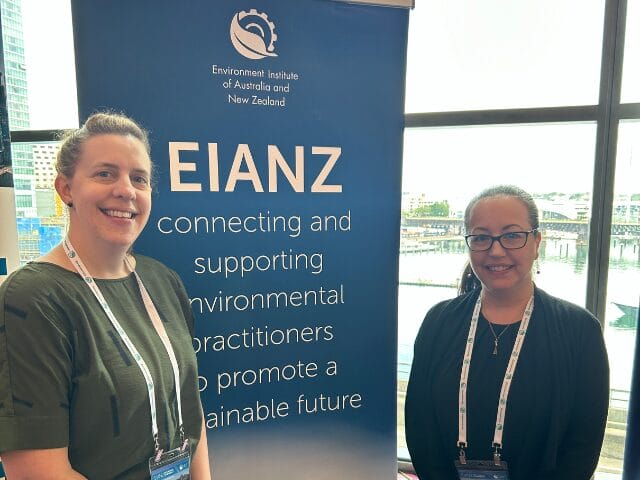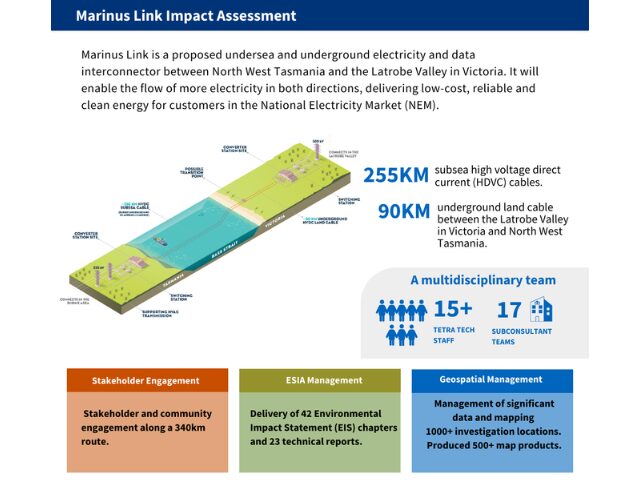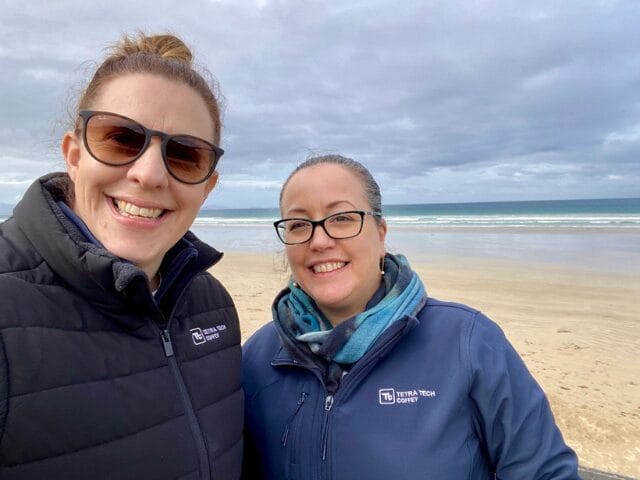
As the global transition to renewable energy accelerates, environmental and planning approvals are emerging as a key risk to project delivery.
Since 2018, the Tetra Tech Coffey team have been working hard to support Marinus Link Pty Ltd deliver one of the most complex impact assessments and set of approval documents for the Marinus Link project. Marinus Link crosses three different jurisdictions, requiring assessment and approval by each regulator.
The project’s combined environmental assessment documents have been on public exhibition and the panel hearing in Victoria is complete. The project is now awaiting assessment by the Victorian Minister for Planning and an approval decision from the Commonwealth Minister for the Environment and Water. The combined Commonwealth Environmental Impact Statement (EIS) and Victorian Environment Effects Statement (EES) together with a draft Victorian Planning Scheme Amendment can be found here.
With the transition to renewable energy and commencement of offshore wind projects in Australia, multiple jurisdictional approvals are going to become more common. There is no clear guidance or one piece of legislation or regulation that sets out how to assess the impacts of projects across multiple jurisdictions where bilateral agreements between the states and Commonwealth don’t apply.
For projects like Marinus Link and offshore wind farms, that have impacts within both state and commonwealth jurisdictions, the scope of impact assessments and approvals pathway need to be considered on a project-by-project basis and negotiated with the relevant regulators.
Because of this it can be difficult to assess and communicate the impacts of the whole project to the community and stakeholders, while also addressing the needs of different regulators with different environmental matters and approaches to assessment.

Best Practices for Navigating Complex Approvals
Through experience, Tetra Tech Coffey has identified key practices that enhance the success of multi-jurisdictional projects:
Stakeholder Engagement: Early, proactive engagement with regulatory agencies, the community and traditional owners to foster trust and agreed pathways for the approval process. This open communication allows for concerns to be identified early and addressed effectively.
Tailored Assessments: the assessments for each project must be tailored to meet the specific needs of the jurisdictions it crosses. This requires a detailed understanding of local laws, regulations, and environmental practices.
Flexibility and Adaptability: Multi-jurisdictional projects are rarely straightforward, and often require changes in scope or methodology as new information becomes available. Having a flexible, adaptive approach is essential to navigating the complexities of these projects.

Picture: Erin Pears and Katie Watt – Marinus Link field study
“Leading with Science: Navigating the Complexities of Multi-Jurisdictional Environmental Approvals” – presented at EIANZ 2024 conference, Sydney 11 October 2024 by Katie Watt, Senior Principal Environmental Consultant, Tetra Tech Coffey and Erin Pears, General Manager East Coast, NZ and PNG Environments, Tetra Tech Coffey.
Connect with our presenters:
Katie Watt on [email protected]
Erin Pears on [email protected]